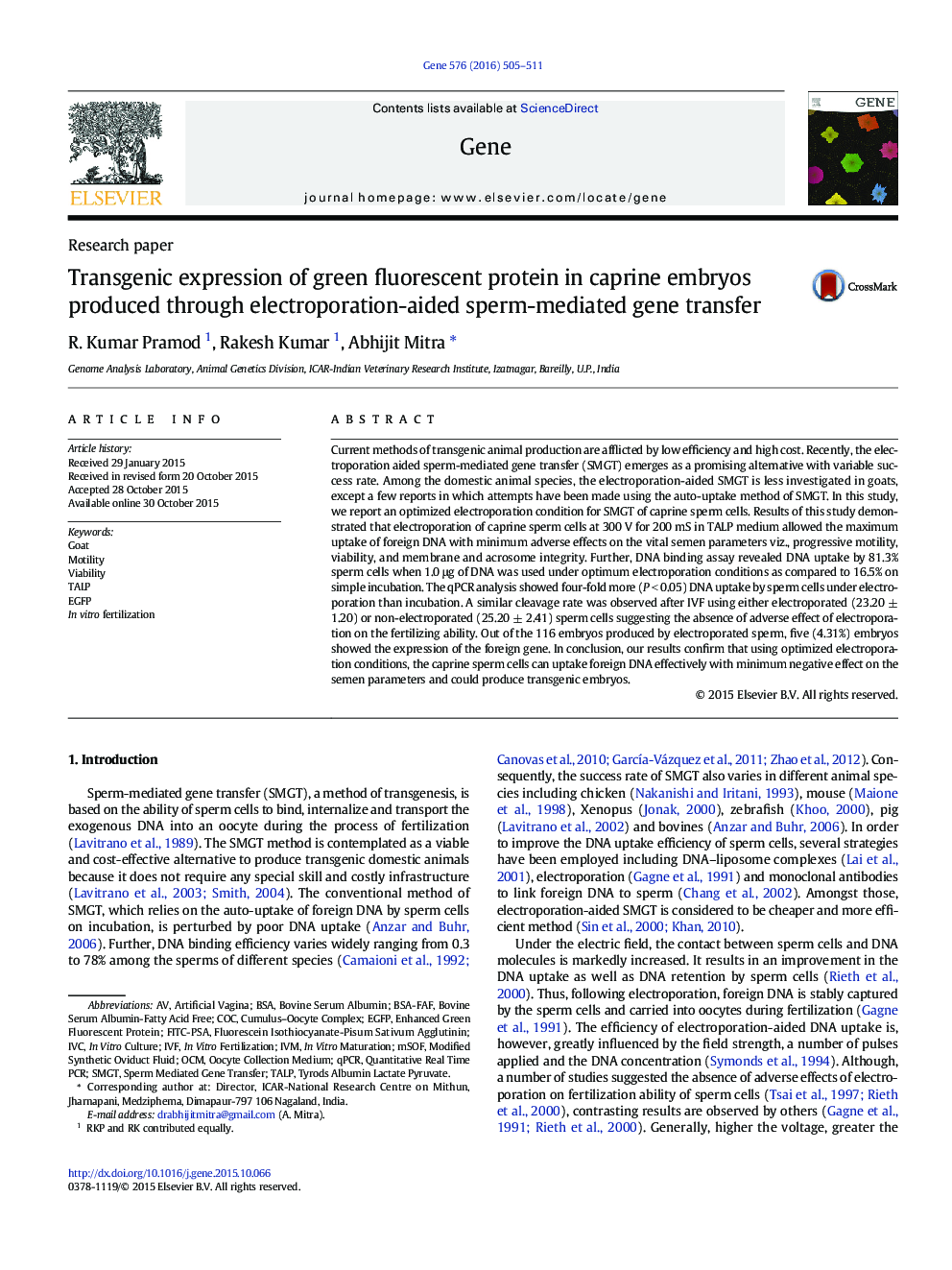| Article ID | Journal | Published Year | Pages | File Type |
|---|---|---|---|---|
| 5905211 | Gene | 2016 | 7 Pages |
â¢We report, for the first time, a protocol of electroporation aided SMGT in goat.â¢The protocol showed a higher DNA uptake by sperm with minimum adverse effect.â¢There was four folds more DNA uptake by sperm cells under electroporation.â¢Eletroporation of sperms did not impede the embryo cleavage rate on IVF.â¢We produced transgenic fluorescent goat embryos using electroporation aided SMGT.
Current methods of transgenic animal production are afflicted by low efficiency and high cost. Recently, the electroporation aided sperm-mediated gene transfer (SMGT) emerges as a promising alternative with variable success rate. Among the domestic animal species, the electroporation-aided SMGT is less investigated in goats, except a few reports in which attempts have been made using the auto-uptake method of SMGT. In this study, we report an optimized electroporation condition for SMGT of caprine sperm cells. Results of this study demonstrated that electroporation of caprine sperm cells at 300 V for 200 mS in TALP medium allowed the maximum uptake of foreign DNA with minimum adverse effects on the vital semen parameters viz., progressive motility, viability, and membrane and acrosome integrity. Further, DNA binding assay revealed DNA uptake by 81.3% sperm cells when 1.0 μg of DNA was used under optimum electroporation conditions as compared to 16.5% on simple incubation. The qPCR analysis showed four-fold more (P < 0.05) DNA uptake by sperm cells under electroporation than incubation. A similar cleavage rate was observed after IVF using either electroporated (23.20 ± 1.20) or non-electroporated (25.20 ± 2.41) sperm cells suggesting the absence of adverse effect of electroporation on the fertilizing ability. Out of the 116 embryos produced by electroporated sperm, five (4.31%) embryos showed the expression of the foreign gene. In conclusion, our results confirm that using optimized electroporation conditions, the caprine sperm cells can uptake foreign DNA effectively with minimum negative effect on the semen parameters and could produce transgenic embryos.
